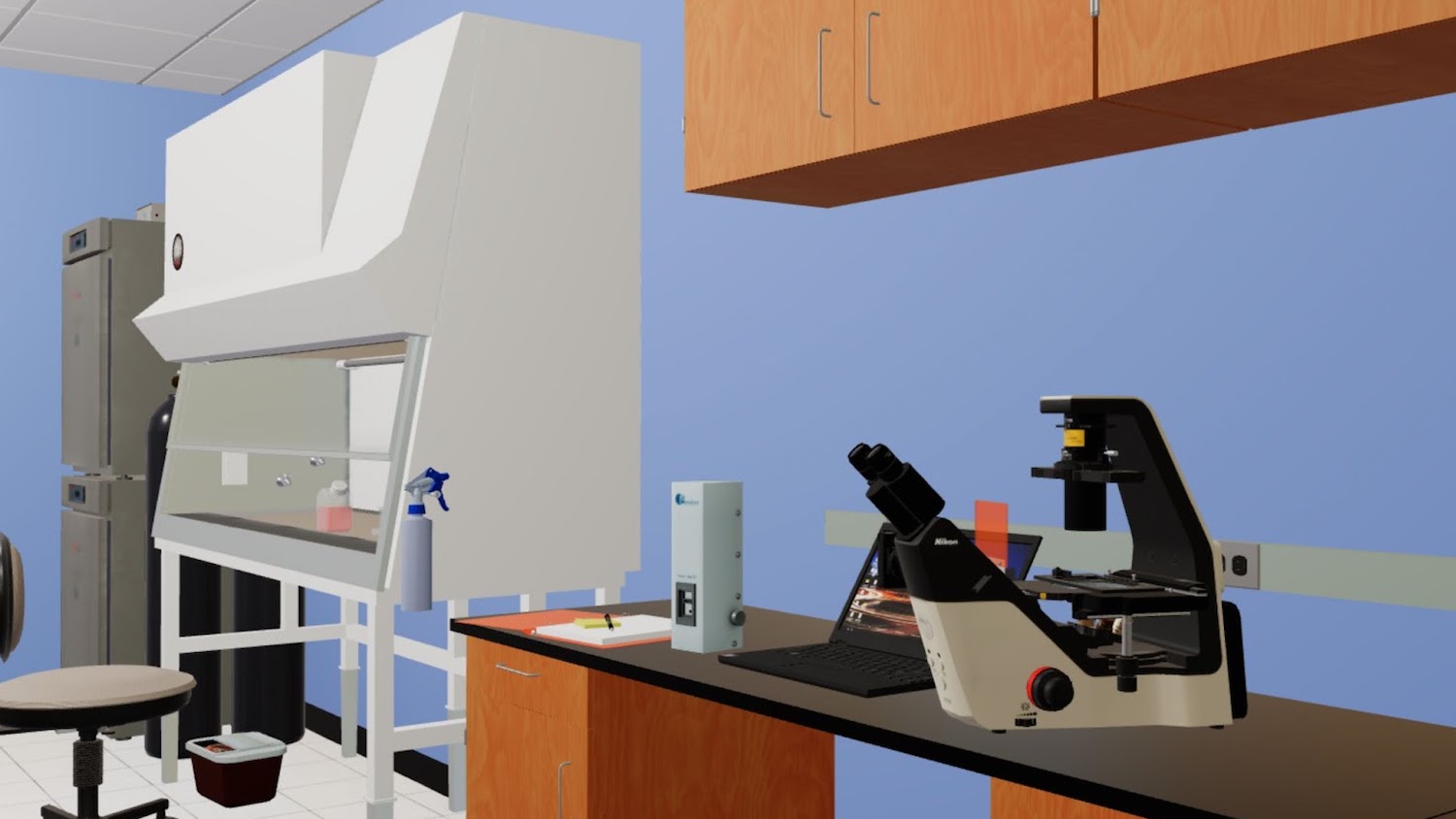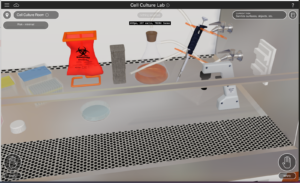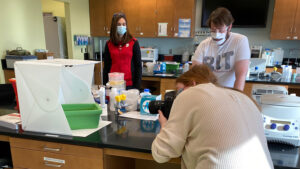Experimenting in the Lab Sandbox

Lab courses are vital opportunities for students to gain the necessary hands-on experience to learn course content and be competitive in the growing biotechnology industrial workforce, and BIT 410/510: Manipulation of Recombinant DNA is no different.
BIT 410/510 requires students to get experimental with molecular biology and protein chemistry, and labs like these constantly evolve and create new challenges for instructional designers to address to give students and instructors the best experience possible.
To respond to the issues of lab access posed by COVID-19, a team of DELTA staff led by Project Development Lead David Tredwell, Instructional Design Lead Caitlin McKeown and Evaluation Lead Dan Spencer set out to design an immersive, online lab environment that would provide as many learning opportunities as an in-person lab environment.

“Outside of COVID-19 issues, there are access concerns for other institutions who do not have the resources or infrastructure to provide their students with these types of hands-on laboratory training,” Srougi said. “Designing immersive virtual labs in this way has the potential to create more opportunities for students both at home in NC State and outside of NC State to have exposure and training in cutting edge areas of molecular biotechnology.”
Working with Teaching Assistant Professor Melissa Srougi and Teaching Postdoctoral Scholar Jacob Dums from the interdisciplinary Biotechnology Program (BIT), the team originally focused on creating a widely distributable virtual reality lab, but they pivoted on their plans and created a “lab sandbox” for the BIT 410/510 course. This “lab sandbox” gives faculty the opportunity to configure their lab scenarios to allow students to make decisions, see the results and receive feedback on good and bad choices.
Planning an Immersive Experience
According to the team, “The baseline lab experience is available as a single-page web app, available on a broad range of devices, with additional activities branching off to take advantage of alternative technologies.” The team was already confident in making the virtual lab accessible. The challenge was to replicate the interactivity and decision-making opportunities that were available in the in-person lab to the virtual environment.
BIT 410/510 aims to give students experience in DNA cloning, PCR, protein purification, protein detection, mammalian cell culture and more. Giving students the opportunity to experiment like this in a virtual lab environment meant taking on a unique approach.
“Failure is an important part of learning and research, thus instructors wanted to give the students enough agency for the virtual activities to also fail,” Dums said.

To address this challenge, the team created the lab with a nonlinear design, meaning it allows students to navigate between stations in the lab to complete tasks in their own order. Students progress through the lab by interacting with various objects, such as mixing and measuring solutions, changing temperatures and interacting with cells. With a nonlinear design, the lab gives students the chance to experiment with different ways to complete the tasks, which will result in more mistakes, successes and learning opportunities.
“Providing students with feedback was an important design feature. It allows users to reflect on their choices and repeat the lab to improve their technique and experimental outcomes,” Srougi said. “It also allows instructors to provide tailored guidance. Due to resource restrictions, many in person hands-on labs cannot afford students the opportunity to iterate. Another unique advantage of the virtual labs is that they can fill the void in this way, thus complimenting an in-person experience.”
Information regarding student decisions is stored per lab object to measure the success and failure for procedure steps. This required the team to gather information for every possible action, location and object within the lab, in addition to normal and expected lab procedures. To achieve this, the team collected this information from a series of worksheets completed by instructors of the course.
“A real challenge posed by this lab was all the complicated interactions between complex objects. To address this, we came up with many utilities, shared item behaviors, optionally loadable items and a system for compartmentalizing code,” said Tredwell.
Developing a Virtual Lab
After researching other virtual lab projects, such as previous DELTA projects and video games, the team decided to take a web-based approach to the lab, rather than focusing solely on augmented reality (AR).

The team experimented with various virtual lab designs using Google Drawings, SketchUp and Mozilla Hubs and expanded upon the developments of previous DELTA projects. To better understand the student experience, the team took a trip to the in-person lab where they participated in lab activities and took photographs and 360 environment captures.
“An early visit to the BIT labs proved invaluable. We got a chance to observe and try out techniques, which helped reinforce our understanding of student goals, challenges and limitations. It also gave us a chance to see and better understand the physical lab space,” McKeown said.
The project required the help of many DELTA staff to create many models and find dozens of purchasable 3D assets needed for the lab, so the team delegated work to team members according to three categories: content, modeling and development.

“It took a village to tackle this lab, and many hands played a role in fleshing it out. Some made simple models to block things out or found purchasable online
assets while others focused on creating custom models that would play key roles in the lab,” said Spencer.
The course and project benefited from their teamwork.
“Working with DELTA allowed us to develop the framework for this project. Their expertise was invaluable in translating an abstract idea into a ‘virtual reality,’” Srougi said.
The Future of BIT 410/510
The project received Institutional Review Board (IRB) approval last fall, and the team will test the lab with students this semester. Using analytics and usability of experience data, the team plans to continue evaluation of the success of implementation and impact on student motivation of the lab this semester.

Srougi will continue working on this project in collaboration with Associate Professor Arnav Jhala in the Department of Computer Science through a recently funded BioMade Education and Workforce Development grant using assets and AR from the lab. The project, Educating the Current and Future Bioindustrial Workforce: Molecular Biology, Bioprocessing Fundamentals and Responsible Innovation, is also a BIT 410/510 Course Development project led by BIT faculty, including Associate Teaching Professor Carlos Goller and Assistant Teaching Professor Stefanie Chen during the 2021-2022 DELTA Grants cycle and will be making use of the Moodle Course Roadmap and seeking Quality Matters (QM) Certification.
If you are interested in taking part in meaningful projects like this one, proposals for DELTA Grants projects will be accepted beginning in April. Visit https://delta.ncsu.edu/course-planning/delta-grants/ for more information.


